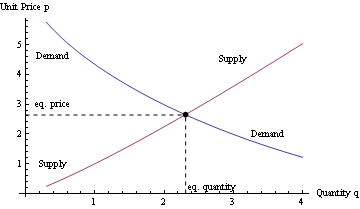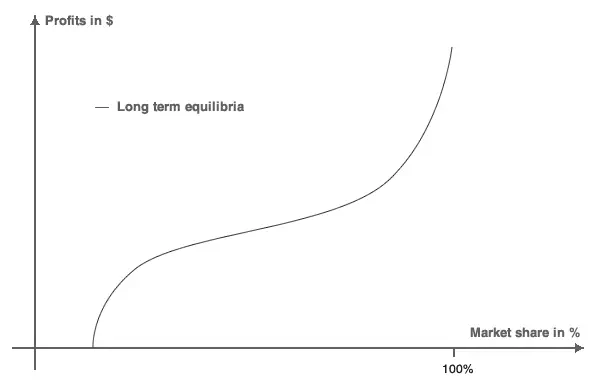Pricing a newly launched product is one of the most crucial decisions a business can make. Price too high, and potential customers may turn to competitors. Price too low, and you risk undermining your product’s perceived value or cutting into your profit margins. Striking a balance between being competitive and maintaining profitability to establish a market price requires a strategic approach rooted in data and experimentation.
Let’s look at how to set a reasonable market price for newly launched products by incorporating competitive pricing, price analysis, and other essential strategies.
How to Set A Reasonable Market Price?
1. Understanding Market Trends to Set Market Price
Before deciding on a price, businesses must first understand the market trends that will influence the success of their product. Price fluctuations in the market often reflect changes in consumer demand, seasonal factors, or external economic conditions.
For instance, launching a new product during an economic downturn may limit your ability to price it aggressively. Similarly, during peak seasons or when consumer confidence is high, there may be more flexibility in pricing decisions.

Image Source: Wikipedia
Trends also include understanding consumer behavior and the current competitive landscape. Are consumers in your industry willing to pay a premium for new technology, or do they prefer budget-friendly options? Keeping an eye on these factors helps you anticipate the shifts that could impact pricing and demand for your new product.
One effective method to stay informed about market trends is through price analysis of similar products. By observing how prices have fluctuated in your category, you can predict potential challenges and opportunities for your launch.
For example, if historical data shows a seasonal dip in prices right after the holidays, you may choose to time your product launch before that decline or prepare a discounting strategy.
Researching competitor data can provide insight into how competitors adjust their pricing in response to market conditions, allowing you to forecast potential pricing battles and plan accordingly.
2. Conduct a Thorough Price Analysis
Conducting a price analysis is critical when determining a reasonable price for a new product. This involves gathering and evaluating pricing data from several sources, including direct competitors, substitutes, and market benchmarks.
This data provides a clear picture of the current pricing landscape and allows you to determine where your product should be positioned.

Image Source: NCMAHQ
Start by researching the prices of your closest competitors. Look at how they structure their pricing, what features their products offer, and whether they bundle services or add-ons.
It’s also essential to consider how competitors price similar products in various regions or platforms, as pricing can differ significantly depending on the distribution channel or target market.
When conducting your price analysis, pay attention to the following factors:
- Product differentiation: How does your product stand out from existing solutions? Does it offer unique features or higher quality that could justify a premium price, or is it a budget-friendly alternative to more expensive products?
- Cost structure: Your price must cover all direct costs (like production, distribution, and marketing) while also accounting for indirect costs such as customer service or warranty claims. Pricing too low may attract customers but could jeopardize long-term sustainability if your margins are too slim.
- Customer willingness to pay: Analyze consumer behavior to gauge how much your target audience is willing to spend. Surveys, focus groups, and historical purchasing data can be invaluable in understanding the price sensitivity of your market.
A well-rounded price analysis allows you to position your product accurately within the market and avoid guesswork. Whether you choose to set a premium price, mid-tier rate, or competitive low price, this research will inform your decision.
3. Competitive Pricing Strategies for Optimal Market Price
One of the most popular ways to set a price for a newly launched product is through competitive pricing.
This strategy focuses on pricing your product based on what competitors charge for similar offerings.
However, competitive pricing does not necessarily mean matching the lowest price in the market. Instead, it’s about aligning your product’s price with the value you offer relative to competitors.

Image Source: Metrics Cart
There are three primary ways to implement competitive pricing:
- Price matching: Setting your price to match that of a key competitor. This works well if you believe your product offers comparable value and features.
- Price undercutting: Pricing slightly below your competitors can help attract price-sensitive customers. However, be careful not to erode your profit margins too much in the process.
- Premium pricing: Setting a higher price to signal that your product offers superior quality, features, or brand prestige compared to competitors. This strategy works particularly well in markets where consumers are willing to pay more for perceived value.
To successfully execute a competitive pricing strategy, you need to regularly monitor competitor data.
Track how competitors adjust their prices in response to market conditions or new product launches. Staying agile and informed allows you to make timely adjustments and stay competitive without sacrificing profitability.
In addition to price monitoring, consider differentiating your product beyond just price.
Offering better customer service, a longer warranty, or value-added features can justify a higher price and help you stand out in a crowded market.
4. Pricing Experiments: Test and Learn
When launching a new product, it’s important to remain flexible with your pricing.
Running pricing experiments allows you to test different strategies and see how they affect sales, conversion rates, and customer perception.
These experiments can be particularly useful for fine-tuning your pricing strategy after the product is introduced to the market.

Image Source: Corrily
Here are some common pricing experiments:
- A/B testing: Present different prices to different segments of your audience to see which price point generates the best results. For instance, you could test a price of $99 against $119 to determine if the higher price leads to significantly fewer sales or if customers are willing to pay more for added perceived value.
- Dynamic pricing: Adjust your prices in real-time based on factors such as demand, customer behavior, or inventory levels. This strategy is often used in industries like e-commerce, where prices fluctuate frequently based on changing market conditions.
- Psychological pricing: Pricing a product at $99.99 instead of $100 can have a significant impact on consumer perception and sales. Small changes in how you present your pricing can lead to big shifts in behavior.
By collecting data from these pricing experiments, you can determine the optimal price that balances customer acquisition with profitability.
Additionally, these tests provide a feedback loop that helps you react quickly to price fluctuations.
5. Monitor Pricing Data and Adjust Accordingly
Once your product is on the market, the work is far from over.
Regularly monitoring pricing data will allow you to stay ahead of competitors and ensure that your pricing remains competitive without sacrificing margins.
Sales performance, customer feedback, and competitor behavior can all signal when it’s time to adjust your pricing.

For example, if you notice that a competitor has reduced their price significantly, and it’s affecting your sales, you may need to respond with a temporary discount or special promotion.
Conversely, if your product is selling better than anticipated, you may have room to raise the price without alienating customers.
6. Crafting a Long-Term Pricing Strategy
Your initial product launch price is important, but it’s just the beginning.
You also need a long-term pricing strategy that accounts for product lifecycle changes, market conditions, and business goals.
Over time, your product’s price may need to evolve to stay competitive, maximize revenue, or cater to a broader audience.

Image Source: Lokad
There are two common long-term pricing strategies:
- Penetration pricing: This involves introducing a product at a low price to attract early adopters and quickly gain market share. Once your product is established, you can gradually increase the price as demand grows.
- Skimming pricing: In contrast, skimming involves launching a product at a high price to capture the maximum revenue from early adopters who are willing to pay a premium. Over time, as competitors enter the market and demand decreases, you can lower the price to attract more price-sensitive consumers.
Both strategies require careful consideration of market trends, price fluctuations, and your long-term business objectives.
Whether you aim to be a premium brand or a budget-friendly alternative, your pricing should be adaptable and reflective of both your internal costs and the external competitive landscape.
Conclusion
Setting a reasonable market price for newly launched products is a multifaceted process that requires careful consideration of competitive pricing, thorough price analysis, and strategic pricing experiments.
Ultimately, pricing is not a one-time decision—it’s an ongoing process that demands flexibility and adaptability. Optimize your product pricing with 42Signals. Schedule a demo now!







